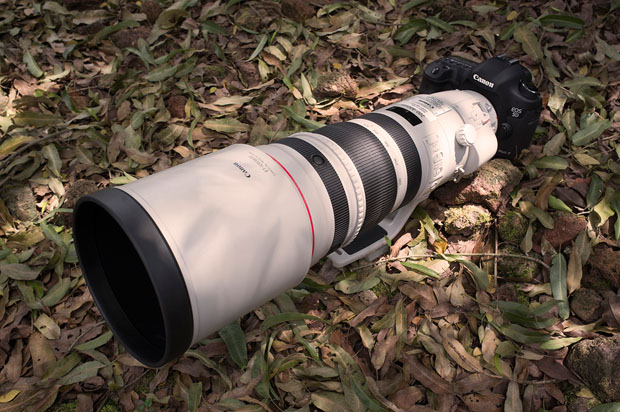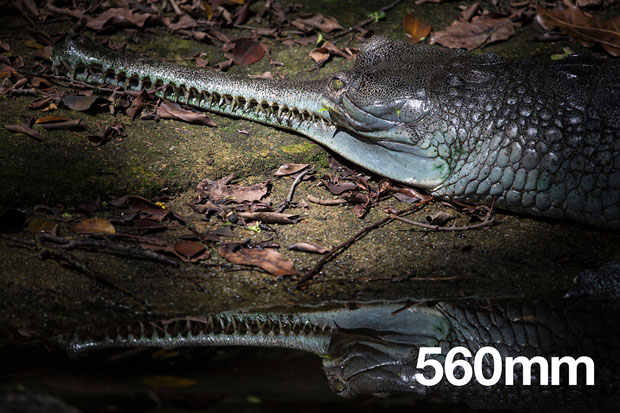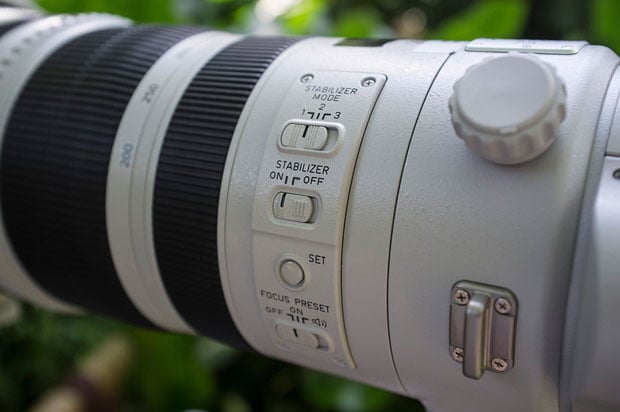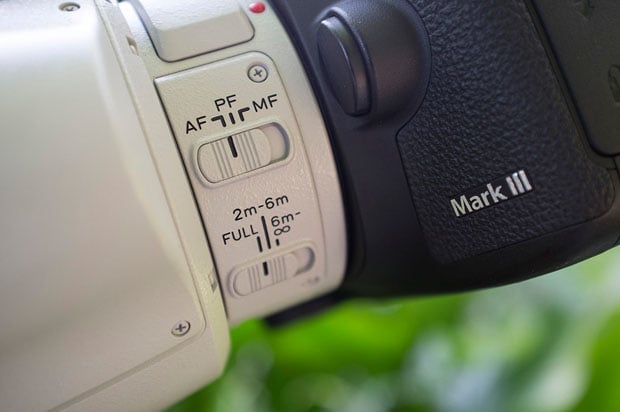Review: Canon’s 200-400mm f/4L IS 1.4x Stretches Focal Length and Wallets
![]()
If camera manufacturers were high school boys, building super telephoto zooms would be their equivalent of a pissing contest to see who can shoot the farthest or most accurately. Sports photographers would arrive at the stadium packing the biggest lens to win bragging rights, acting like Arnold Schwarzenegger slinging his Gatling gun in Terminator. But Canon’s super telephoto zoom, the EF 100-400mm f/4.5-5.6L IS USM, is getting long in the tooth, and it’s time to say, “hasta la vista, baby” to that lens.

For wildlife photographers and photojournalists, Canon has announced the new Canon EF 200-400mm f/4L IS USM Extender 1.4x lens (what a mouthful!), which we will henceforth refer to as the “Canon EF 200-400mm f/4L”.
Weighing a hefty 3.6kg (8lb) in the red corner, this challenger packs 25 elements in 20 groups and measures 36.6cm (14.5”) in length. Like other new Canon super telephoto lenses, it is weather sealed and features ring-type ultrasonic motors with full-time manual focus override.
Unfortunately Canon has been very late to the super telephoto zoom party. Nikon has been strutting its stuff on the dance floor with its Nikkor AF-S 200-400mm f/4 G lens since 2003 (and Mk II since 2010), so if Canon wants to arrive fashionably late it must bring along a special friend: a built-in 1.4x extender that stretches its maximum focal length to 560mm.
Think of it as a nitrous oxide (NOS) boost in a drag race, giving it instant power up over its rivals, except this one is legal.

Canon’s party trick of integrating a teleconverter is a world’s first, and the execution is brilliant. The extender (what Canon calls a teleconverter) resides in a small bump when not in use, and you simply slide a switch for the additional 8 elements in 4 groups to swing into the optical path, giving you 1.4x more reach at the expense of 1 stop light loss.
Balancing a super telephoto lens on a monopod while mounting an extender (especially in the rain or dust) is like mud wrestling a pig. It can be done, but you are going to get dirty and sweaty, and you will break something in the process.
Sliding a switch to effortlessly activate the built-in extender on the Canon EF 200-400mm f/4L, on the other hand, makes you feel like James Bond in a tricked-out Aston Martin. Ladies will be stirred, and your opponents shaken.
The inclusion of a built-in extender is a brilliant idea for a super-telephoto zoom, giving you a seamless range from 200mm up to 560mm at the flick of a switch. To illustrate the flexibility of the focal length range, I shot same scene below with the wide-end of 200mm and at its longest reach of 560mm. With just a flick of a switch and a twist of the zoom ring, you can switch between shooting an entire herd or a close-up of an individual.


There are more controls on the lens than Darth Vader’s chest piece, letting you select the autofocus range and image stabilizer mode. Canon’s latest super telephoto L lenses feature the Power Focus (PF) mode, which is of special interest to moviemakers to drive the autofocus electronically for a smooth and quiet focus during movie recording. The Force is strong with this one…


Build quality is extremely sturdy as one would expect from a Canon L super telephoto lens, and it balances well on a monopod or tripod. At 3.6kg (8lb), the lens is a gloriously expensive way to train your biceps, but the zoom lens replaces three lenses simultaneously to justify its hefty weight.
Your muscles will whine from the lactic acid onslaught, but it gets better with time. It is heavy, but the golden question is – is it worth its weight?
The image quality of the Canon EF 200-400mm f/4L is, in a word, excellent. Even when shot wide-open at f/4 or f/5.6, the contrast and sharpness of the lens is very good.
Actually it is gob-smacking amazing for a lens with 25 elements (or 33 elements if you activate the built-in extender). Consider that the Canon EF 400mm f/2.8L IS II USM or EF 600mm f/4L IS II USM has only 16 elements each, it is nothing short of an engineering feat for the Canon EF 200-400mm f/4L to deliver such stellar performances with twice the number of elements!
![]()
![]()
Autofocus is very fast and decisive, even on the EOS 5D Mk III body. With a long lens like this, having a vertical grip goes a long way in keeping the set-up steadier while making it easier to shoot in portrait orientation.
Another useful tip for shooting with such long telephoto focal lengths is to keep your shutter speed high to avoid image blur due to the extreme high magnification. The Image Stabilizer alone will not help much with subject movement, so a safe shutter speed will be 1/350th second or faster with this lens.
![]()
![]()
Now that we’ve established the sharpness of the lens, the question in everyone’s mind doubtlessly is: does the built-in extender degrade the sharpness of the optics? And I will let the photos to do the talking…
![]()
![]()
![]()
![]()
These images were shot at 560mm with the extender activated at the 400mm focal length. You can clearly see the details on the bird’s feather, as well as the intricate designs on the dragonfly’s wings. That is some truly amazing detail from the Canon EF 200-400mm f/4L! Out of the 1586 images I shot, more than two-thirds (1149 images) were shot with the extender engaged. “Sharpness” is the middle name of the Canon EF 200-400mm f/4L.
![]()

![]()
![]()
So the Canon EF 200-400mm f/4L IS USM Extender 1.4x lens is very sharp, very fast with autofocus and very versatile in terms of focal length. But it is not perfect. Other than its weight (did I say its hefty?), the lens vignettes slightly wide-open, and it seems to flare when provoked by strong lighting from the side (although the generously deep lens hood goes a long way to mitigate this issue). And if you are new to the lens, there can be some confusion over the focus and zoom rings due to their close placement to each other.
The biggest problem, though, is the price. At $11,799, it is breathtakingly more expensive than its Nikon rival. Granted the Nikon does not have built-in extender, but that must be one hell of a teleconverter for a $5,000 premium!
What are the alternatives then? Well, you could buy the combination of EF 70-200mm f/2.8L IS II USM ($2,499), Extender EF 2x III ($499) and the EF 300mm f/2.8L IS II USM ($6,799), which gives you a faster f/2.8 set-up and you’d still end up saving $2,000. The downside is a missing gap between 200-300mm focal range, and missing opportunities during the time taken to swap lenses and teleconverters.
Are the missed shots worth the premium price? At the end of the day, it’s your call.
![]()
![]()
To be completely honest, I couldn’t wait to return the lens on the first day that I brought it out. The Canon EF 200-400mm f/4L IS USM Extender 1.4x is a lens that should come with a mule as an accessory (although, the weight is quite manageable if you are not moving it around too much).
However, that evening as I reviewed my photos on the computer, every ounce of misgiving evaporated as I reviewed the images. Crisp, tack sharp and contrasty, the photos are what I would never have expected from a super telephoto zoom with an extender.
The pricing of the lens mirrors its super telephoto focal length — it’s a long stretch! But once you have experienced the versatility of a seamless 200-560mm focal range and the high quality images from the lens, you will understand why Canon priced the EF 200-400mm f/4L IS USM Extender 1.4x lens at exactly what it is worth.
About the author: Nelson Tan is a photographer based in Singapore. You can contact him through his Facebook, blog, and his photo gallery.